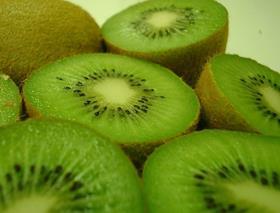
With little chance of eradicating kiwifruit vine disease Psa-V, growing regions outside New Zealand’s main production hub in the Bay of Plenty could become increasingly important.
International Horticulture Congress co-president Professor Ian Warrington told the New Zealand Herald the industry needed to consider establishing orchards outside regions where the disease has taken hold.
"The importance of different growing regions in the future will be far more so than currently," he said, adding that it was unlikely, however, that the majority of production would shift away from the Bay of Plenty.
"I'm talking about diversifying so we've got alternative growing areas where your integrated kiwifruit industry has a chance of getting supply from different regions where climates and seasons may have had different impacts on crops.
"And we'd be talking about innovative growers prepared to take the risk of getting into a new crop or perhaps, if we are able to be very certain about the resistance of new cultivars, then having the courage to put those into new areas and keeping the industry clean."
He said there was little chance New Zealand would ever eradicate the disease.
"The question is, how can various management and chemical techniques be used to suppress it to an economic level where growers can survive and have a viable industry?"
More than NZ$10m (US$8.17m) has been invested in efforts to control the disease.
As of this week, 1669 orchards across the Bay of Plenty, Franklin, Waikato, Coromandel and Hawke’s Bay had tested positive for Psa-V, the New Zealand Herald reported. This equates to around 59 per cent of land in New Zealand given to kiwifruit production.
It is estimated the disease will cost the industry between $740m and $885m, while up to 470 jobs each year over the next three years would be lost.
Zespri CEO Lain Jager told delegates at a recent conference in the Bay of Plenty he believed the industry would return to production levels for gold fruit of around 60m trays.
Production would also be bolstered by at least two new varieties - a high brix, high yielding green and another with an edible skin. “These will take more than a decade to develop and a decade more to commercialise and are not the immediate answer to Psa, but they will drive growth in years to come,” he said.



